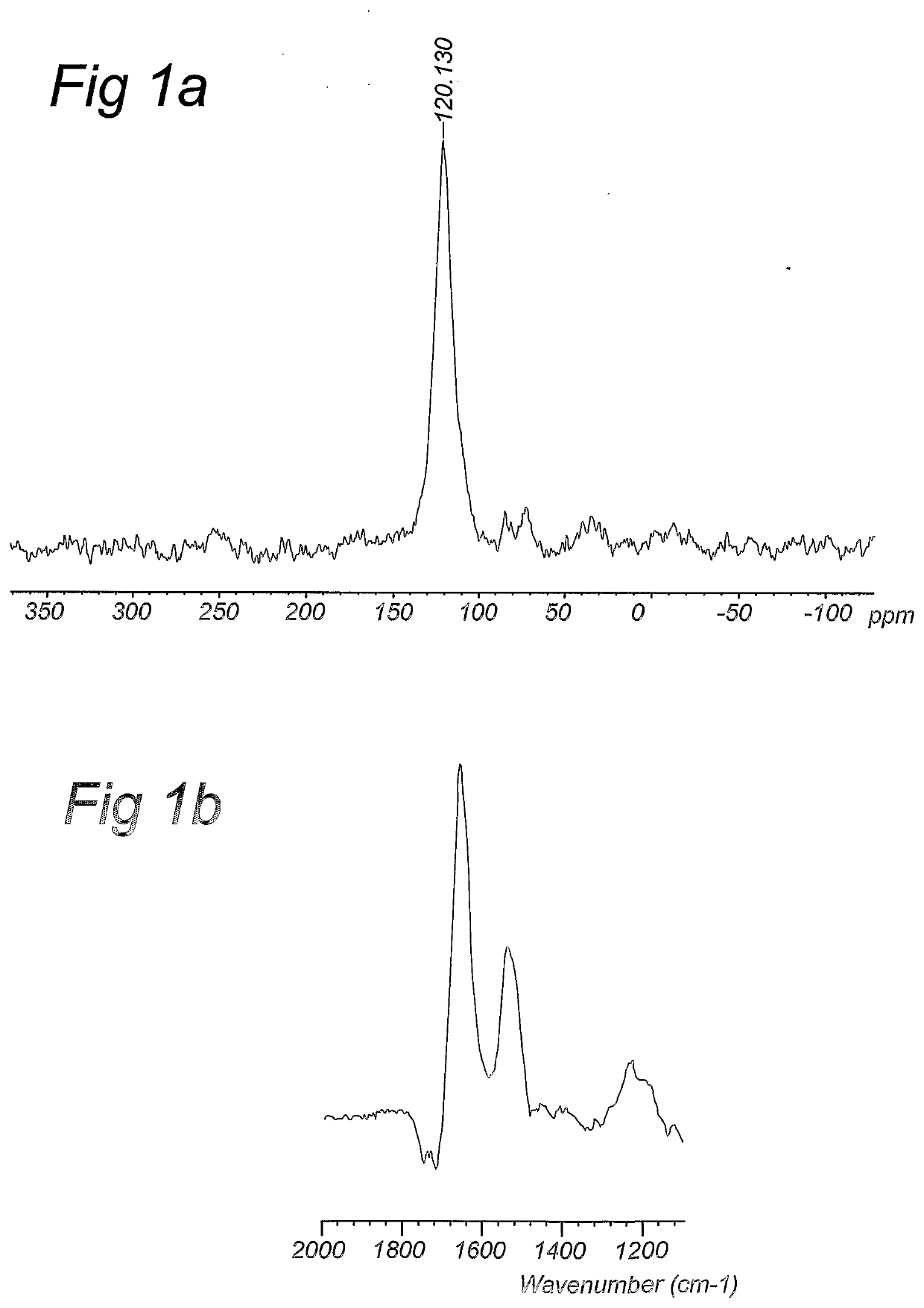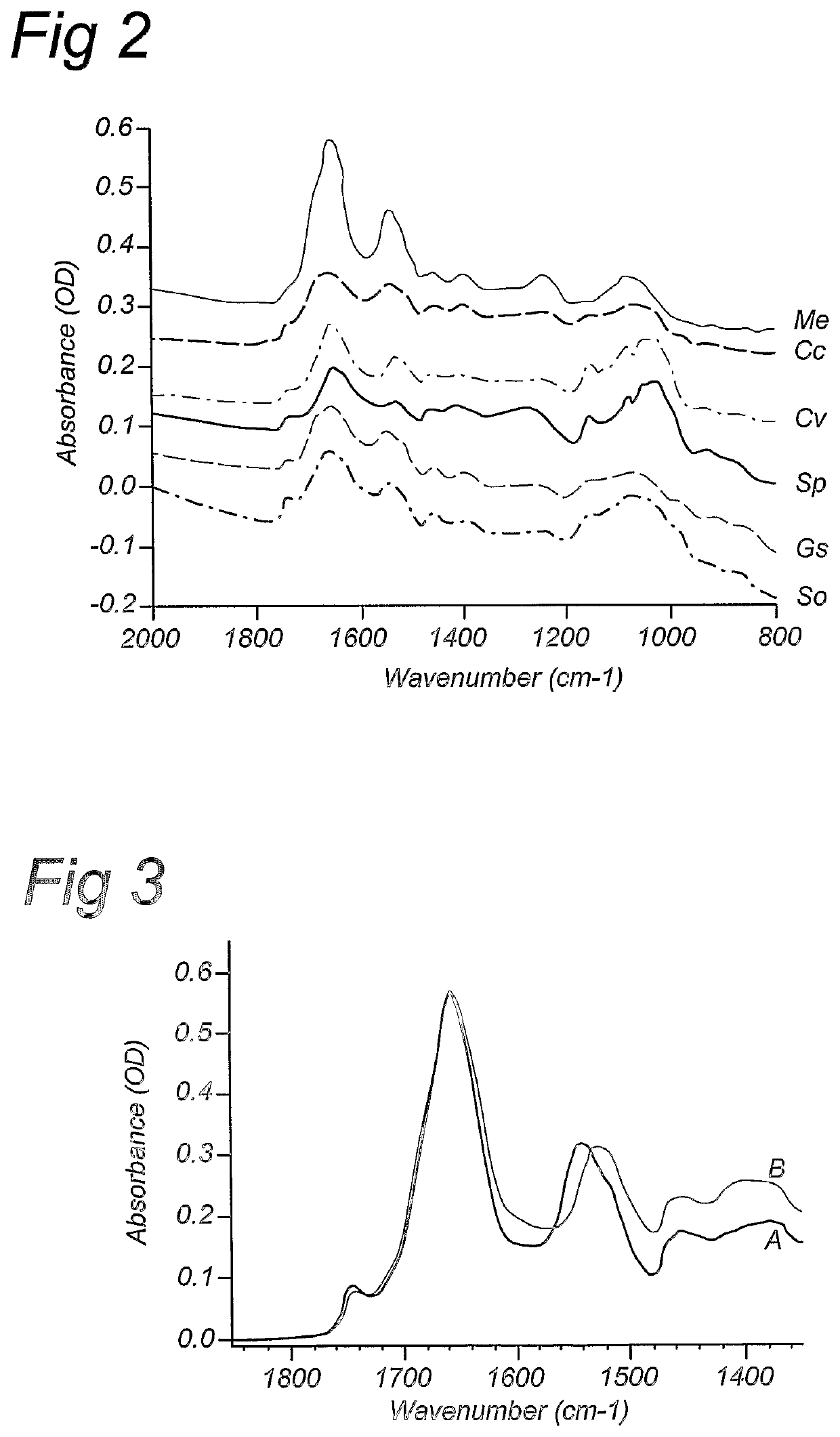Compositions and methods for stable isotope labelling of biological compounds
a biological compound and stable isotope technology, applied in the field of labeling of biological compounds, can solve the problems of insufficient approach to crystallisation of many soluble proteins, limited use of x-ray diffraction for 3-d determination, and failure of attempts to crystallise many soluble proteins
- Summary
- Abstract
- Description
- Claims
- Application Information
AI Technical Summary
Benefits of technology
Problems solved by technology
Method used
Image
Examples
example 1
Production of Stable Isotope Labelled Biomass, Hydrolysate and Extracts therefrom (Yeast as a Source)
[0137]1.1 Yeast Extracts Comprising Amino Acid and Sugar Source Obtained from Saccharomyces cerevisiae
[0138]Saccharomyces cerevisiae (ATCC 13057) was grown in a medium containing (g / l): 13C uniformly labelled glucose-15 g / l, labelled KH2PO4-2 g, 15NH4Cl-1.5 g, MgSO4×7 H2O-0.5 g, CaCl2×6H2O-0.25 g., FeSO4×6H2O-0.036, ZnSO4×7H2O-0.001 g, MnCl2×4H2O-0.001 g, CoCl20-0.001g. Vitamins were added in the same concentrations as described by Heine, W., et al in Stable Isotopes in Pediatric Nutritional and Metabolic Research (1990) (Eds., T. E. Chapman, R. Berger., D. J. Reijngoud, and A. Okken, Intercept Ltd., p. 84. The yeast were cultured as shaking culture in 10-1 conical flasks containing 2.5 1 of the sterilised at 120° C. at 20 min medium at pH 4.5 adjusted with NaOH. To this flask 100 ml of seed culture was transferred. Seed culture was obtained by shaking in a flask at 27° C. for 18 hou...
example 2
Production of Stable Isotope Labelled Biomass, Hydrolysate and Lipid Extracts therefrom (Algae as a Source)
2.1. Production of Stable Isotope Labelled Cyanidium Biomass
[0146]Cyanidium caldarium (SAG 16.91) and Galdieria sulphuraria (SAG 17.91) were each grown autotrophically at 25° C. in 51 flasks with magnetically driven stirring bars in constant temperature water bath at a constant pH of 2 and harvested during the exponential growth phase. Medium composition for 13C, 15N double-labelled cultures of Cyanidium caldarium and of Galdieria sulphuraria contains per litre 1.5 g (15NH4)2 SO4, 0.3 g Mg SO4×7 H20, 0.3 g KH2PO4, 0.02 g CaCl2×2 H2O, 1.5 ml of an Fe-EDTA solution (Fe-EDTA solution was prepared by adding of 0.690 g of FeSO4 and 0.930 g of EDTA to a volume up to 100 ml of distilled water and boiling of solution), and 2 ml of a trace element solution that was prepared separately (see below). The pH of the medium was adjusted to a value of pH 1.8 with 1N H2SO4. Trace element soluti...
example 3
Production of Stable Isotope Labelled Biomass, Hydrolysate and Extracts therefrom (Methylotrophic Bacterium as a Source)
[0152]3.1. Production of Biomass from a Methylotrophic Bacterium
[0153]An obligate methylotroph Methylobacillus flagellatus (ATCC 51484, VKM B-1610, DSM 6875) was grown at 30° C. at pH 6.8 on a 13C— labelled methanol as a carbon source and 15NH4Cl as a nitrogen source on the ATCC medium 784 AMS without agar. The concentration of 13C labelled methanol was 1%. Cells were growing in a 101 fermenter and harvested after 3 days of growing. The yield of the biomass was 53% calculated on 13C-methanol. The biomass was lyophilised. The yield of protein was 75% calculated on dry biomass. The lyophilised cells were used for preparation of lipid extracts and hydrolysate.
PUM
| Property | Measurement | Unit |
|---|---|---|
| molecular weight | aaaaa | aaaaa |
| temperature | aaaaa | aaaaa |
| time | aaaaa | aaaaa |
Abstract
Description
Claims
Application Information
 Login to View More
Login to View More - R&D
- Intellectual Property
- Life Sciences
- Materials
- Tech Scout
- Unparalleled Data Quality
- Higher Quality Content
- 60% Fewer Hallucinations
Browse by: Latest US Patents, China's latest patents, Technical Efficacy Thesaurus, Application Domain, Technology Topic, Popular Technical Reports.
© 2025 PatSnap. All rights reserved.Legal|Privacy policy|Modern Slavery Act Transparency Statement|Sitemap|About US| Contact US: help@patsnap.com


